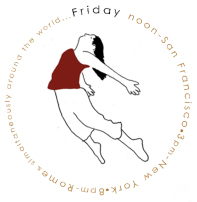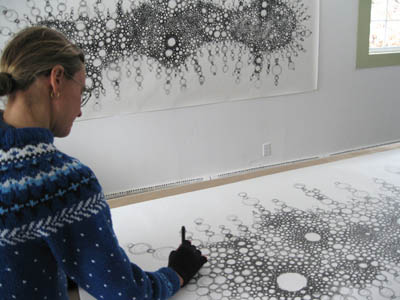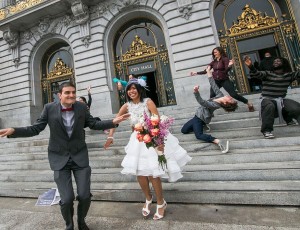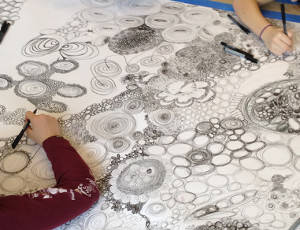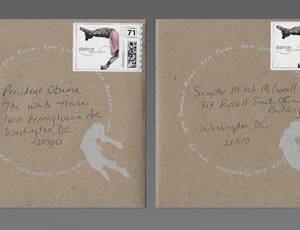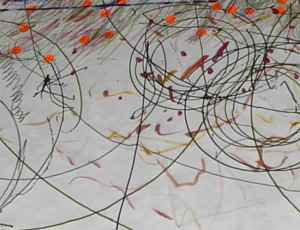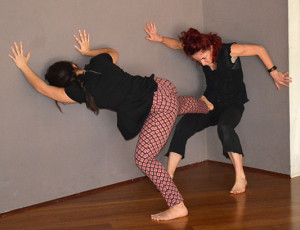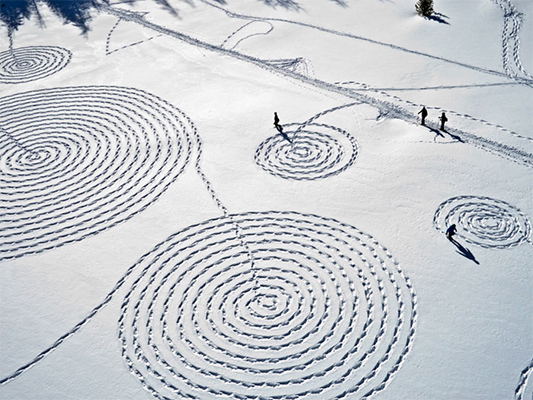
Snow Drawing / Sonja Hinrichsen
Sonja Hinrichsen explores the theme of urban vs. natural environments using large-scale installation and performance documented with photos and video. Sonja is known for her large scale Snow Drawings that include public participation. She has focused on “wastelands, deserts, high mountains, and snow/ice landscapes”, which she first researches and then maps the space with her drawings. For dance anywhere® on March 27, 2015, Sonja performed inside the Kala Art Institute classroom adjacent to their gallery. Sonja described The performance as “completely improvised”. She explained “I hadn’t done this before. The idea came from a series of similar drawings I had in Holland last summer during an artist residency. However, those focused strictly on the outcome—not on the performance at all”.
Wave Drawing Performance – Sonja Hinrichsen – dance anywhere 2015
The work featured Sonja painting wavy lines across a large blank piece of paper. The performance continued until the black lines completely filled the entire surface. Sonja’s inspiration for the piece came from a previous project located in Holland. “The project investigated the way Dutch people have dealt with floods throughout the centuries. Holland basically sits on a swamp and without their constant land reclamation projects, and their extensive systems of dams and dykes most of Holland’s land wouldn’t actually be there. I got interested in researching the Dutch ways of dealing with flooding in respect to the prognosis that global seawater levels will be rising within the next few decades. Places like the San Francisco Bay Area will likely face similar issues to the ones Holland has been dealing with since the early Middle Ages. I wanted to find out how people learnt to cope with these situations, both in the past as well as in the present. They are real experts in flood prevention – and also in claiming lands from the sea. They drained and dried out inland seas centuries ago and more recently they have created entire islands in the sea that they use for agriculture and to build new cities. One of them has a National Park on it, with animals imported from other parts of the world. In an American sense it seems totally bizarre, of course, to create a National Park on artificial land and populated with non-native species. So the underlying concept was related to an environmental art/research project, but the performance itself did not necessarily have an environmentalist agenda.”
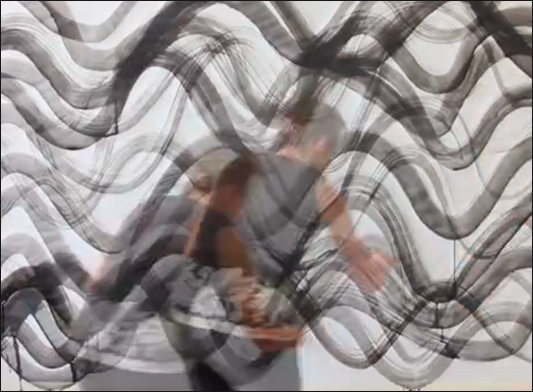
During the performance itself, Sonja performed alone. “Three visitors—a woman with two little girls” came through to as the only audience to witness the piece. Sonja explains that the “performance was very simple: I went back and forth along the huge sheet of paper that was mounted on the wall, creating wave-movements with a big brush and black ink.” During the beginning of the performance, the artist began with “diluted ink” and started to fill “the sheet to the top”. For each subsequent layer, Sonja began utilizing dark ink until the finished piece included a “pure solid black ink”. The dark, grey tones create an ominous sense of environment, and contribute to the hazy-late-in-the-evening shade during a body of water. In comparison to Sonja’s Snow Drawings, which are community driven and include an entire slew of individuals from the public, Wave Drawings, was a solo project. The similarities between both pieces is the way that “art develops slowly through body movement. In both cases, there is a visual piece of art resulting from the performance”.
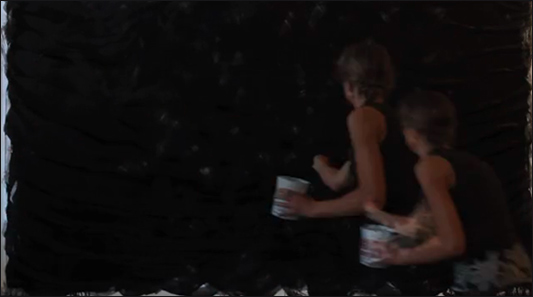
Sonja Hinrichsen’s is interested “in work that’s ephemeral, that exists in the moment, work that leaves no lasting traces in the environment”. Overall, the artist is “interested in addressing environmental topics”. Sonja’s work can best be described by her statement, “We need to tune back in to nature and understand it better if we want to keep living on this planet as a race. We have become too detached and alienated from the natural world”.
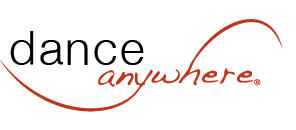
 Sign In
Sign In